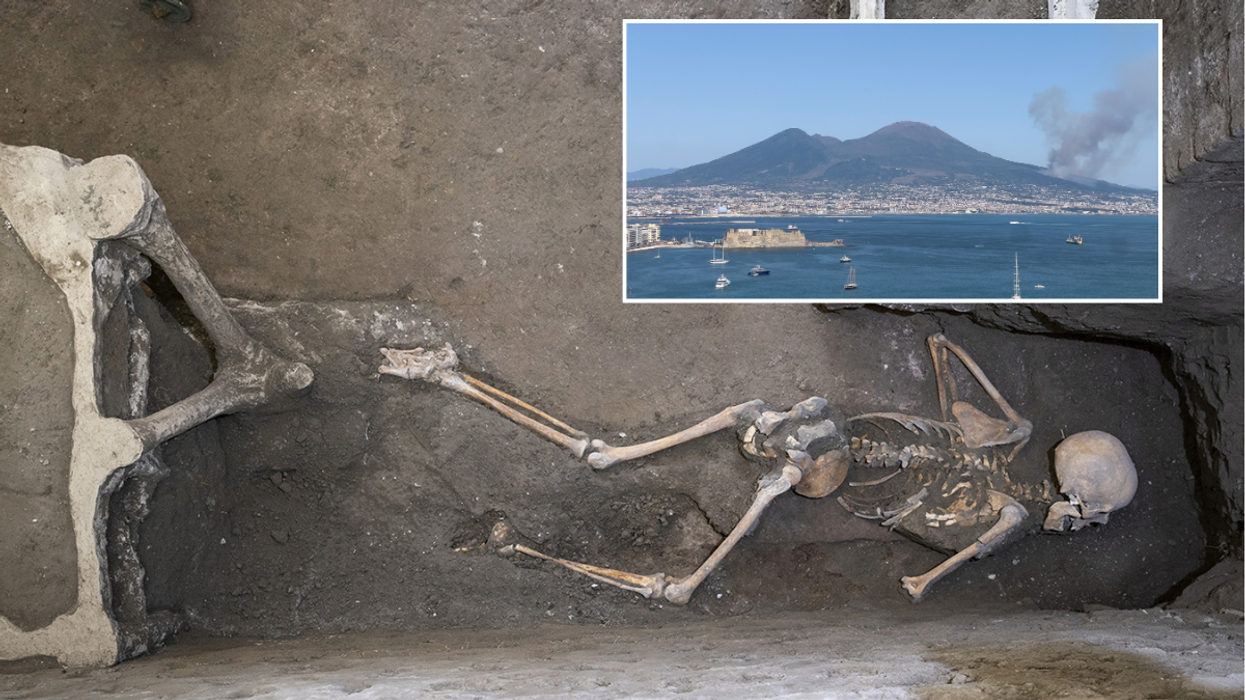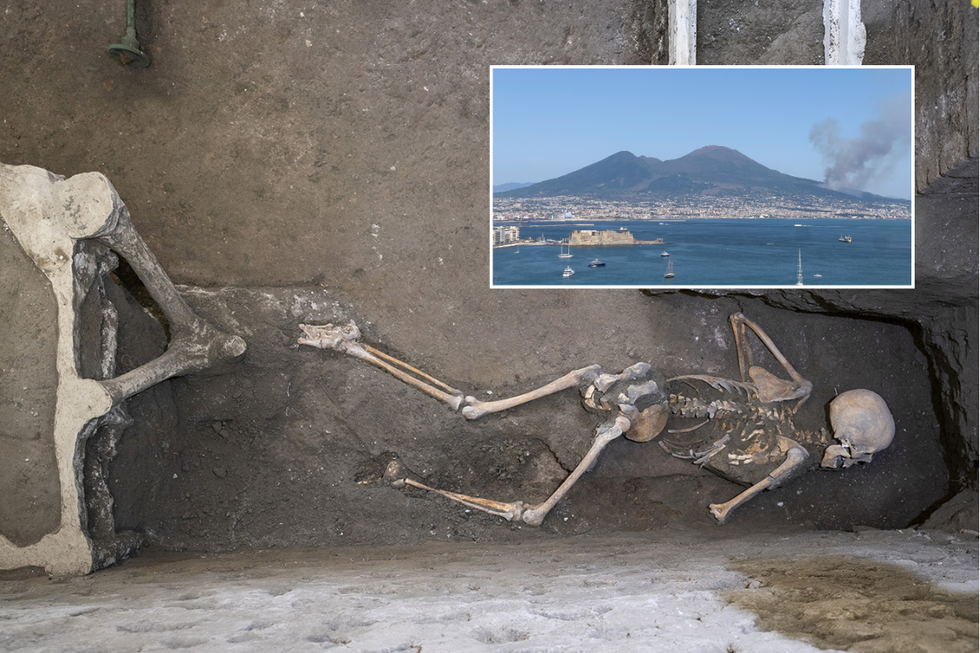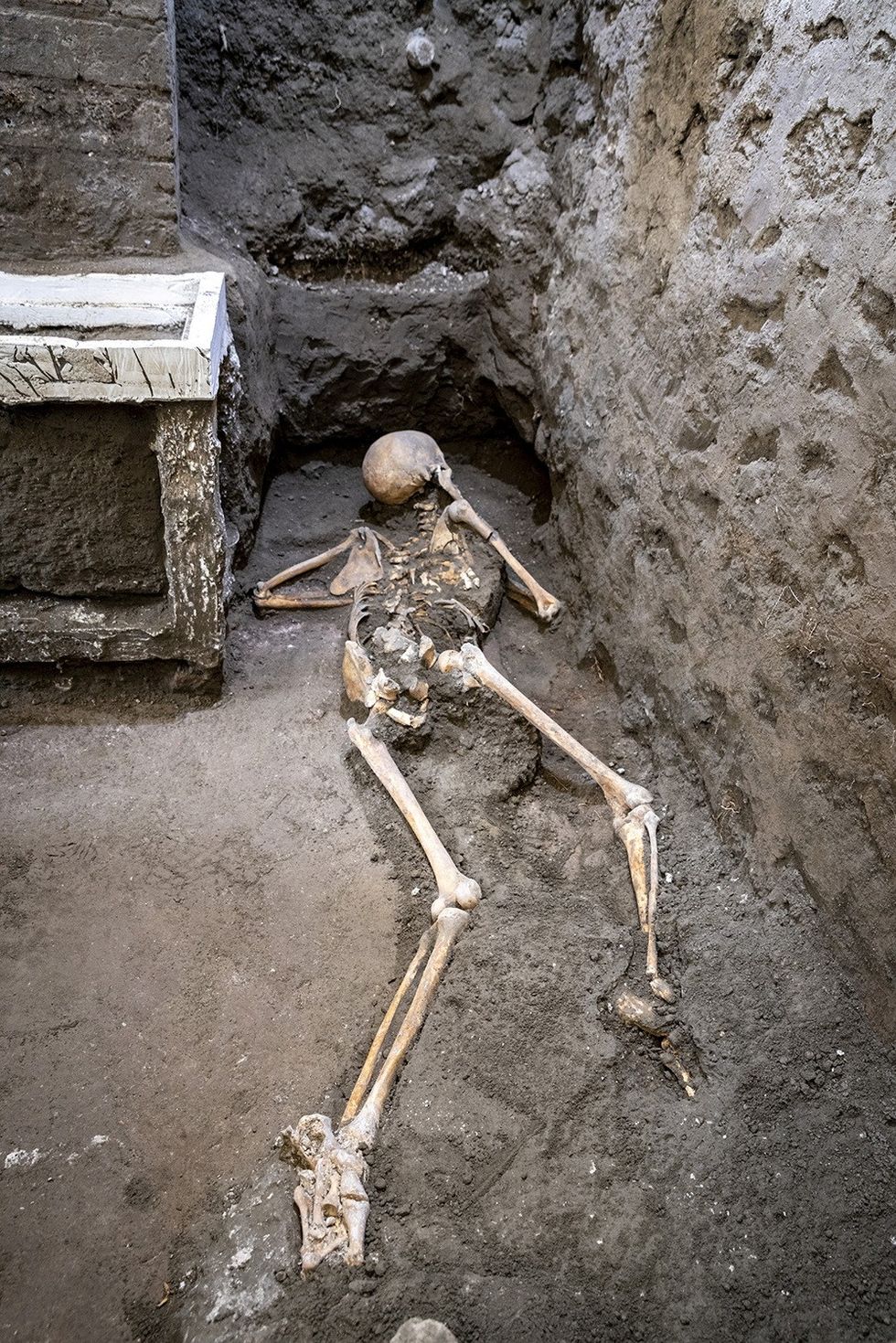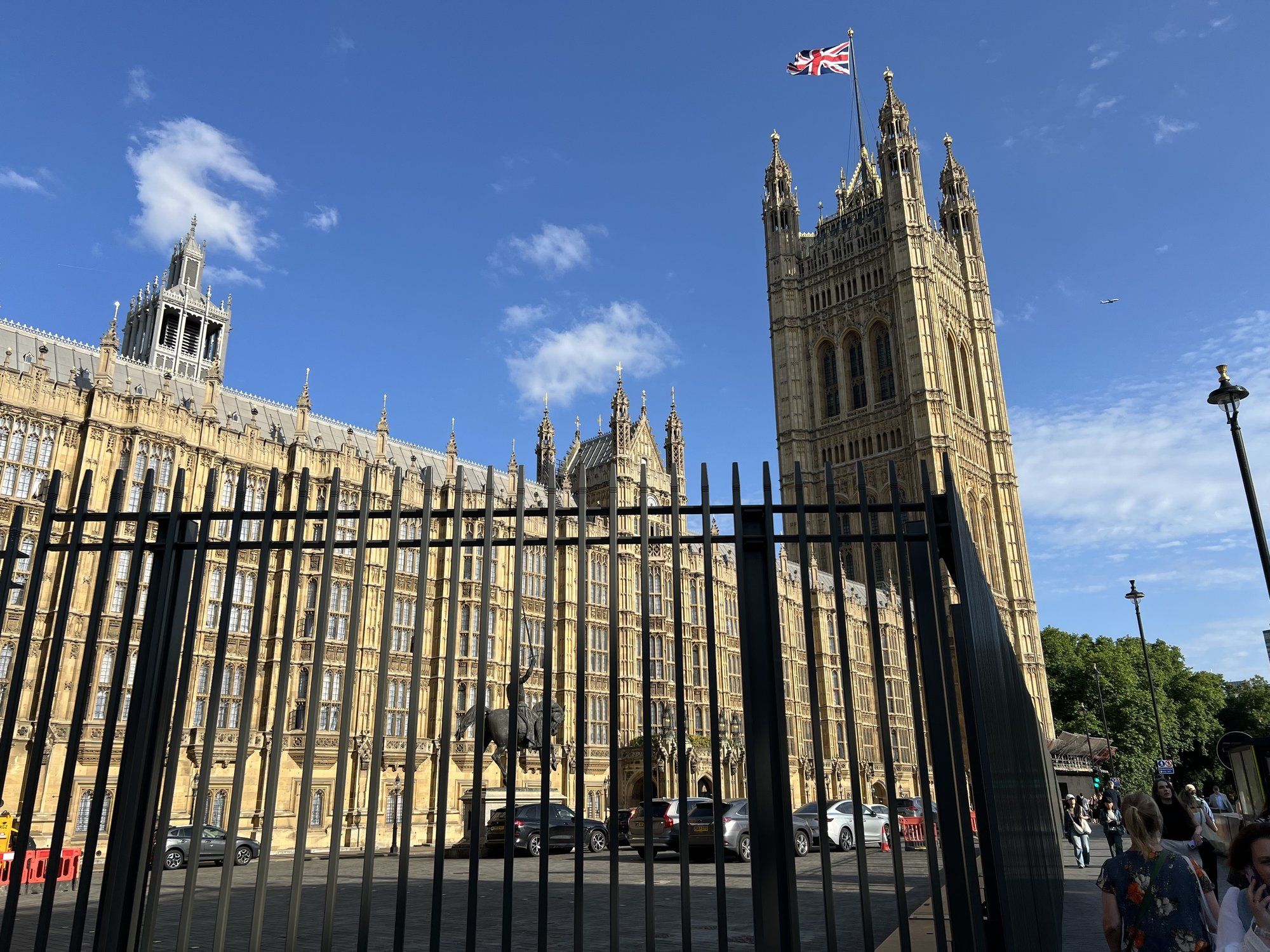Archaeologists uncover incredible Pompeii skeletons which reveal how couple spent last moments alive

One of the skeletons discovered | Reuters

The couple were discovered sheltering from the explosion
Don't Miss
Most Read
Archaeologists in the ancient Roman city of Pompeii have discovered the remains of two more victims of the volcanic eruption almost 2,000 years ago.
The skeleton of a man and a woman were found in a small, makeshift bedroom in a villa which was being restructured when the eruption struck, the Pompeii archaeological site said in a statement.
The woman was lying on a bed with gold, silver and bronze coins around her, along with jewelry including gold and pearl earrings. The man lay at the foot of the bed.
The once-thriving city of Pompeii, near Naples, and the surrounding countryside was submerged by volcanic ash when Mount Vesuvius exploded in 79AD.

One of the skeletons discovered
|Reuters
The eruption killed thousands of Romans who had no idea they were living beneath one of Europe's biggest volcanoes which buried the city in a thick layer of ash, preserving many of its residents and buildings.
The latest victims discovered had chosen the small room as a refuge, waiting for the end of the rain of rock fragments which had blocked the door and prevented them from escaping.
They were eventually buried under the flow of lava and other boiling hot material from the volcano, the statement said.
Ancient Pompeii, rediscovered only in the 16th century, has in recent years seen a burst of archaeological activity aimed at halting decades of decay and neglect.

The skeleton was discovered in an alcove
|Reuters
Site director Gabriel Zuchtriegel said: "The opportunity to analyse the invaluable anthropological data on the two victims...allows us to recover a considerable amount of data on the daily life of ancient Pompeians."
Back in June, the park announced that it discovered what it calls the "Blue Shrine" room near where the skeletons were found. The room is believed to be a sacrarium, a shrine devoted to ritual activities and the storage of sacred objects.
The room is a pale blue, a colour that rarely occurs in Pompeian frescoes and was generally used for elaborately decorated rooms. The excavation found objects relating to the furnishing and renovation of the house.
A collection of frescoes were found in a dining room in the ruined city buried under ash after a catastrophic volcanic eruption. The paintings depicted Helen of Troy among other Greek figures.
The scenes depicted in the artwork showcased themes of heroism through the role heroes and gods played in the Trojan War, as well as themes of fate and the idea that humans can change their own destiny.
The excavations are a part of a broader project to maintain the perimeter between excavated and unexcavated sites and preserve the Pompeii site.










